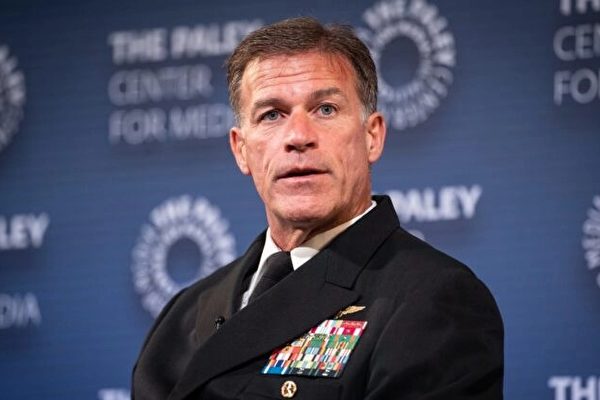The US Indo-Pacific Command commander John Aquilino has revealed that the Chinese Communist Party (CCP) is using the “boiling frog” tactic in the Indo-Pacific region, gradually escalating tensions to ultimately underestimate the danger. He suggested that all countries in the region should continuously speak out against the CCP’s misconduct. Aquilino also emphasized the importance of speed and urgency in preventing conflicts and modernizing military capabilities.
Aquilino took command of the US Indo-Pacific Command during a tense period in US-China relations and is set to step down next week. In a recent interview with the Financial Times, he stated that during his three-year tenure as the US Indo-Pacific commander, the CCP has accelerated its military development and taken more destabilizing actions. He described the CCP as becoming “increasingly assertive, bold, and dangerous.”
He pointed out that the CCP is using the “boiling frog” tactic to enhance its provocative behavior, gradually raising tensions and leading relevant parties to underestimate the ultimate danger until it is too late.
When discussing countermeasures, he stated that “the CCP’s egregious violations of international legal norms must be continuously highlighted and spoken out against by all countries in the region.” He also added that the CCP government is implementing a strategy of “Might is right” throughout the region.
The CCP has frequently dispatched aircraft to fly over the median line of the Taiwan Strait, which was previously considered a buffer zone between mainland China and Taiwan. Chinese military aircraft have also intruded into Taiwan’s southwestern Air Defense Identification Zone. Recently, the Chinese Coast Guard has become more aggressive around Taiwanese islands such as Kinmen and Matsu.
“This is a pressure campaign. I see the range and scope of these actions continuously expanding and not slowing down,” Aquilino remarked.
Shu Xiaohuang, Deputy Research Fellow at the Taiwan Institute for National Defense and Security Studies, indicated that the CCP’s actions of crossing the median line in the Taiwan Strait and approaching the Taiwanese mainland signify a deliberate effort to create a tense atmosphere, engaging in “gray zone” operations during peacetime.
Apart from provocations in the Taiwan Strait, CCP’s coercive behavior in the South China Sea is also escalating. Aquilino cited the Ren’ai Reef issue within the Philippines’ exclusive economic zone as a “prime example” of CCP’s coercive activities. Despite an international arbitration ruling in 2016 rejecting China’s sovereignty claims over the area, the CCP has vehemently opposed the decision.
“I am very concerned about Ren’ai Reef,” stated Aquilino. “Both Philippine Coast Guard and military personnel have been injured. This is a step up from mere pressure actions.”
The CCP’s actions in the South China Sea are becoming increasingly aggressive. To prevent a Philippine resupply ship from delivering supplies to soldiers stationed on a World War II landing platform near Ren’ai Reef, Chinese coast guard ships and maritime militia vessels have repeatedly rammed or used water cannons to attack Philippine vessels, resulting in damages and injuries to personnel.
In February of last year, a Chinese vessel targeted a Philippine resupply ship with a “military-grade laser,” causing temporary blindness to Filipino crew members.
Although the CCP temporarily halted “unsafe and unprofessional intercepts” of US reconnaissance aircraft following a meeting between US President Biden and CCP leader Xi Jinping in November last year, Aquilino warned that intercepts remain a tool in the CCP’s toolbox, deployed as needed. The continued pressure on the Philippines by the CCP reflects a bullying strategy of “Might is right,” with the belief that they can escape punishment.
As he prepares to transfer military command in the Indo-Pacific, Aquilino emphasized the importance of speed and urgency for the US military in operations and delivery capabilities. This includes the complex network connecting sensors and weapons. He stressed that the capability to prevent conflicts requires a sense of urgency and speed from the US military in providing new modern capabilities.

